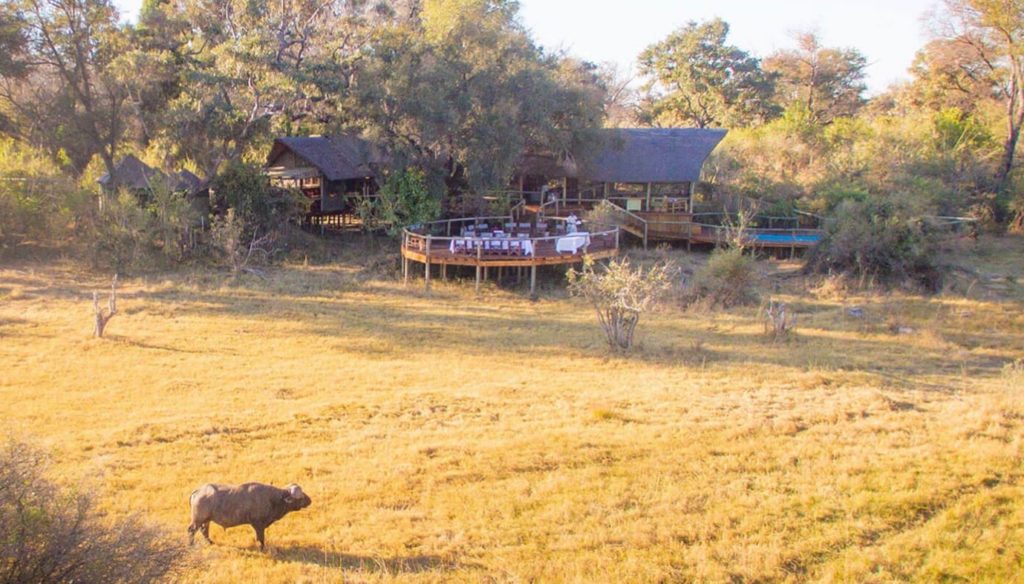
Our last camp in Botswana was Rra Dinare, which in the native language of Tswana means Water Buffalo. And we certainly saw more water buffalo there than anywhere else. The camp is set in a private 100 sq mile concession, adjacent to Moremi Game reserve on the south-eastern side of the Okavango Delta. It overlooks the Gomoti River and its flood plains.

As amazing as the other camps and lodges were, this one just knocked it out of the park. The tents were more spacious with additional seating areas. And the common areas were lovely and welcoming.

Our daily routine was much the same as the other camps: Wake up call is at 5:45 am. Here at Rra Dinare, though, they actually delivered hot coffee to our tent.
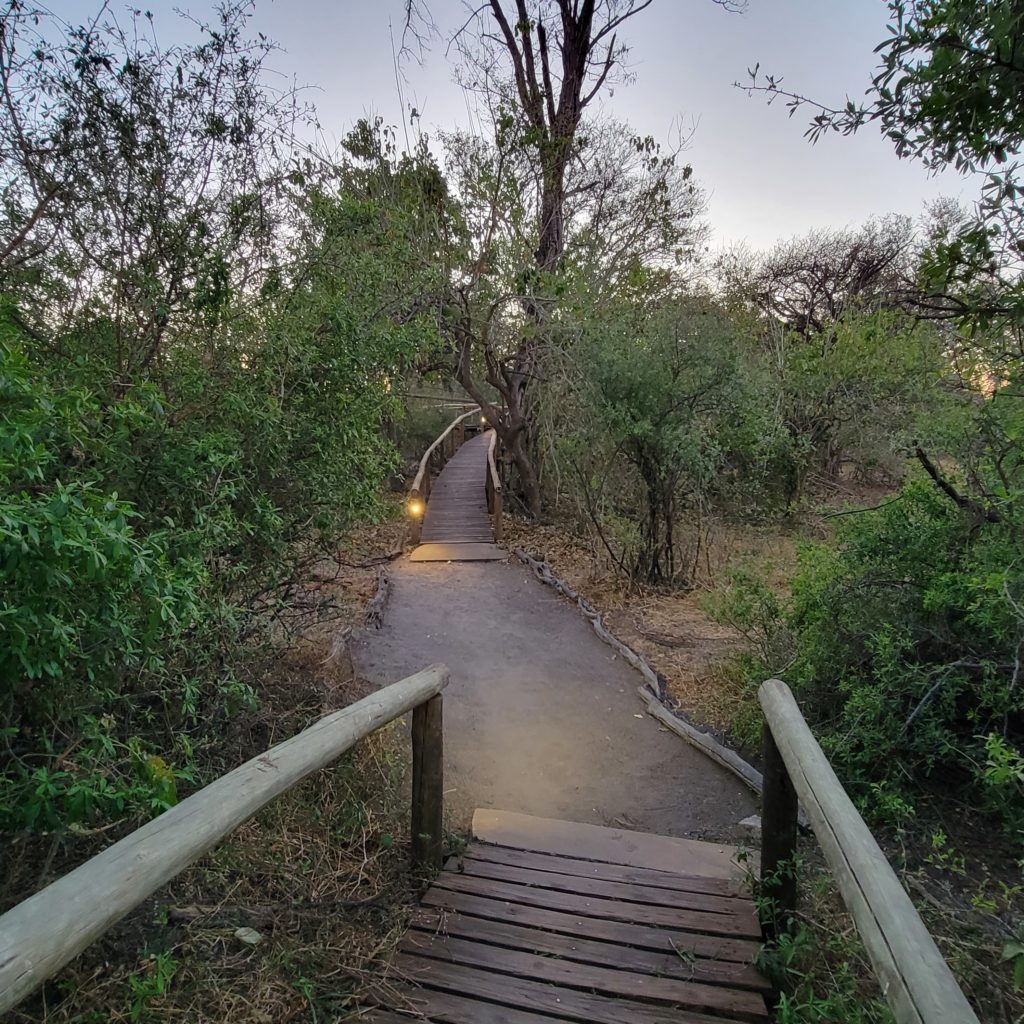
The guide would return at 6:15 to walk us to breakfast, because it was still dark and we were not allowed out of our tent alone. The pic above shows the boardwalk to camp, and the elephant/buffalo/whatever crossing. Breakfast is a small meal with yoghurt and cereal and muffins.

At 7:00 we would leave for a morning game drive. The vehicles are open, so they provide us with blankets to keep warm until the sun warms the area. The pic above shows our guide Alco doing what he calls “Reading the Morning News”, which means checking animal tracks. The morning drive is about 3 hours long, and includes a stop for biscuits and coffee. We get back to camp before 11:00 when brunch is served, which is a big meal including hot dishes, cheeses and fruits, and eggs cooked to order. Then we go to our tent for siesta until 3:30, when we return for high tea and a small snack.
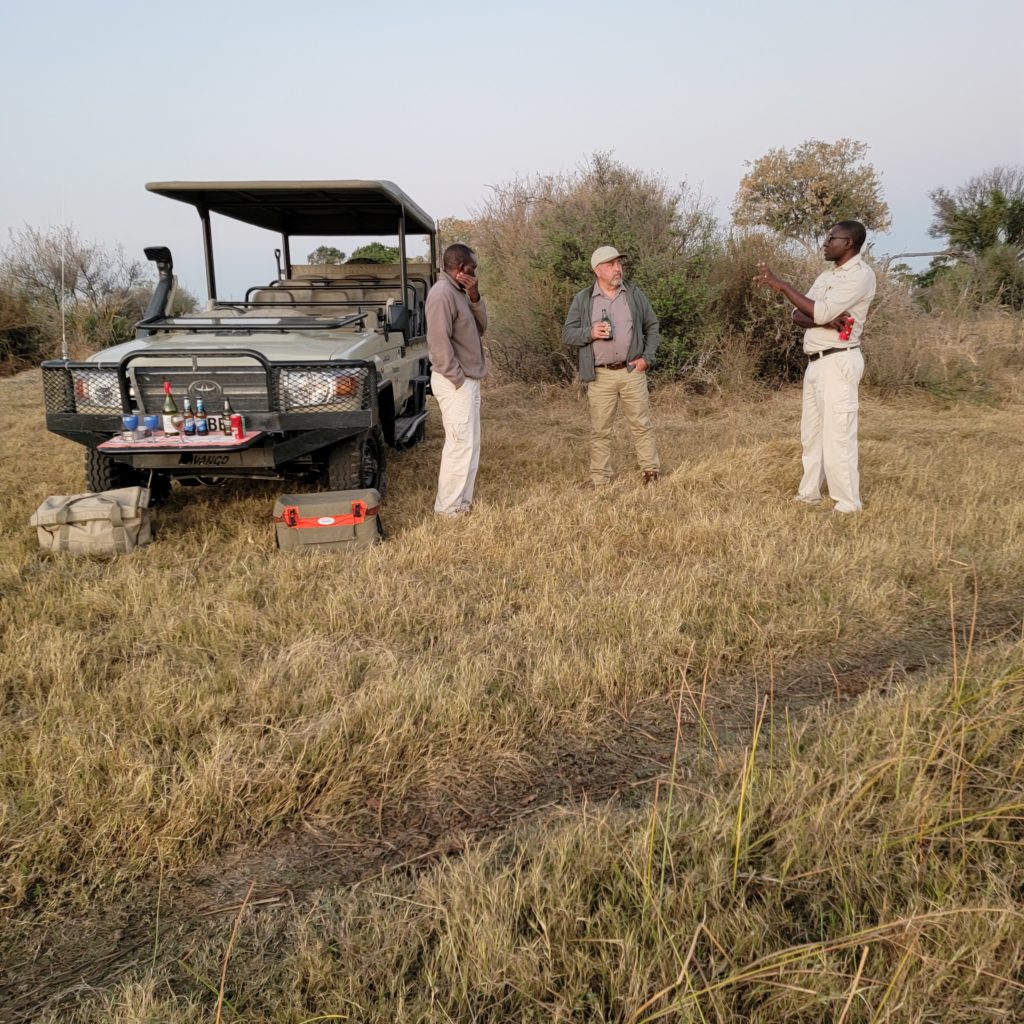
At 4:00 we’re off for the evening game drive. At sunset we stop and enjoy a sundowner and the beautiful setting sun. Then we’re back to the camp around 7:00 for a drink around the fire before dinner at either 7:30 or 8:00. After dinner the guide walks us back to our tent for the rest of the evening.
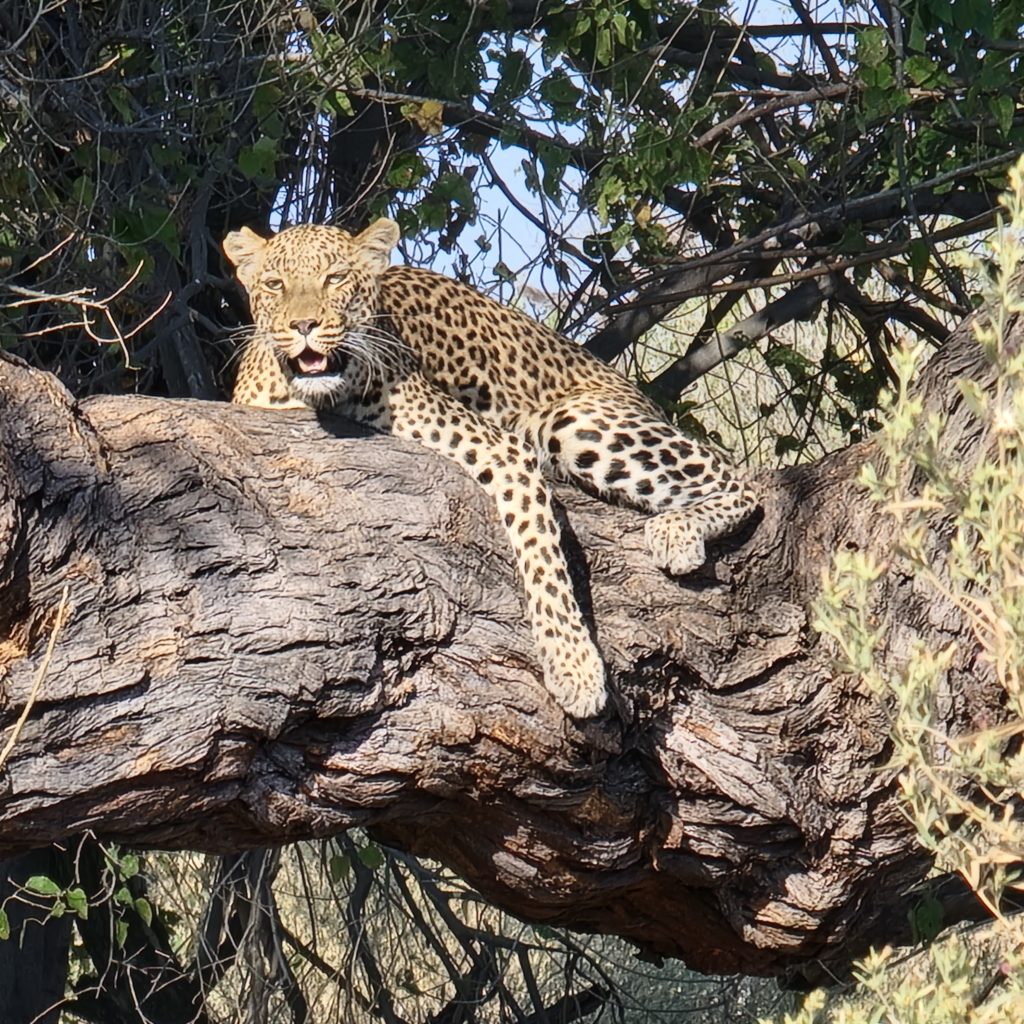
At Rra Dinare Rob and I had most of our drives alone with our guide and his uncle. The other folks in the camp were in a big group of 11, with four siblings who had grown up in Botswana and now lived in four different corners of the planet. Alco told us first thing that he had another guide watching a leopard for him so he knew where it was going to be for us. And he drove us straight out to the sighting. It was a great start to our first drive at Rra Dinare!

An hour later we were at the sighting of a pair of lionesses and their cubs. We watched them for a while until the sun started getting low and the lionesses wandered off to start looking for dinner.
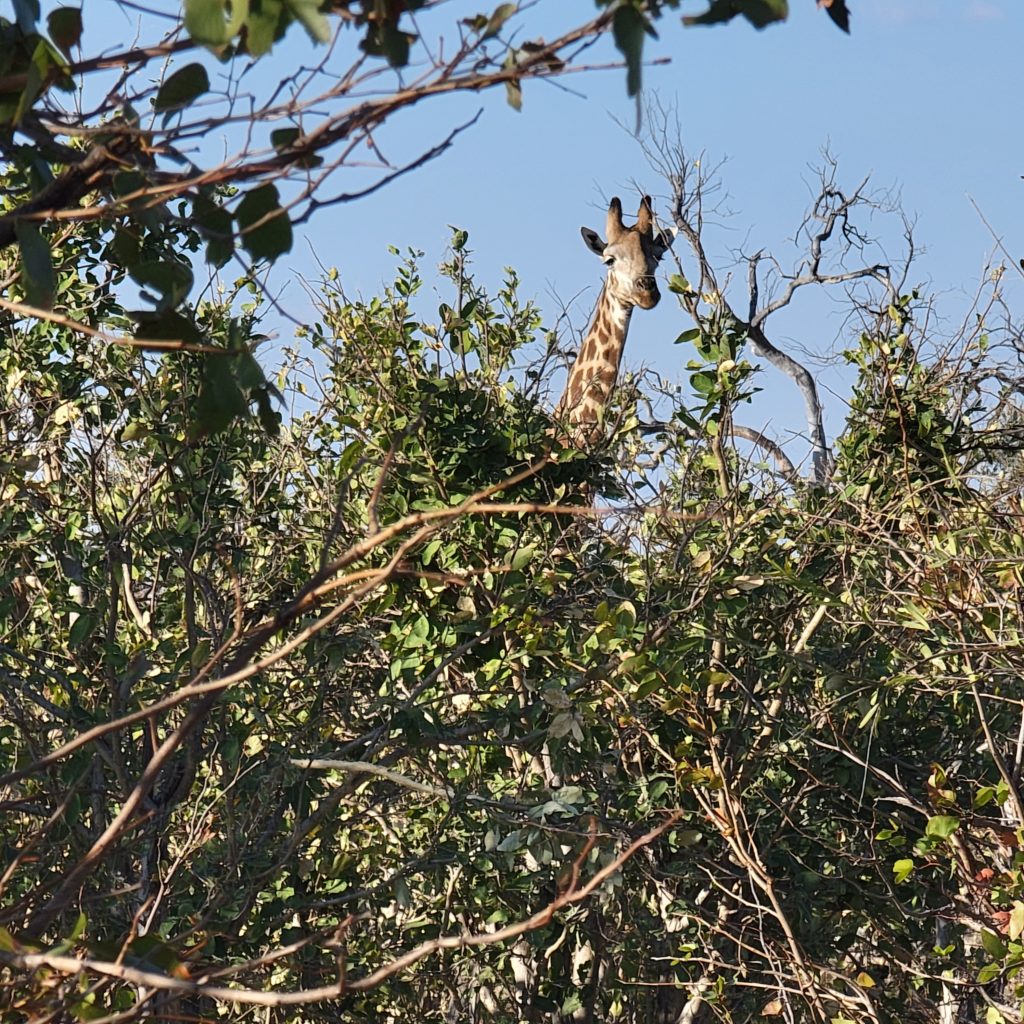
Other sightings that day included several giraffes, zebra, water buffalo, and of course many elephants. Alco was brilliant about positioning the truck so we got the best view of a herd passing by, not afraid to offroad and bushwhack whenever necessary.
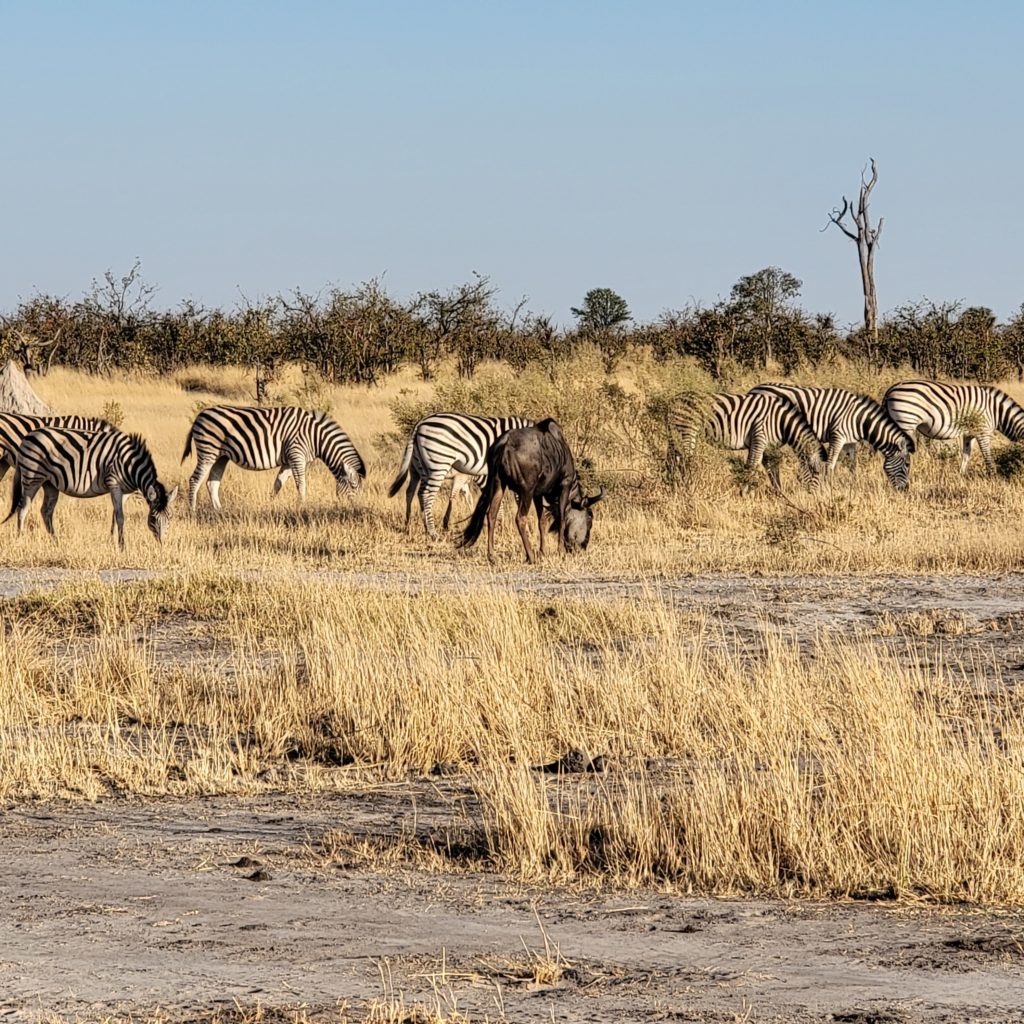
The next morning’s drive started slowly, until we found the herd of zebras with their wildebeest pal. The guides all communicate via vhf with sightings, and Alco heard of a pride of lions at a giraffe kill, so we zoomed off to see that.

On the way there, we came upon a different pride of 15 lions, which included a huge male, 4 lioness and 10 cubs. We stayed for a long time watching them all interact. They literally were within feet of our truck at times, but Alco convinced us that they saw us and the truck as all one huge unit and would not attack. If we stepped out of the truck, all bets are off and we’re then a snack.
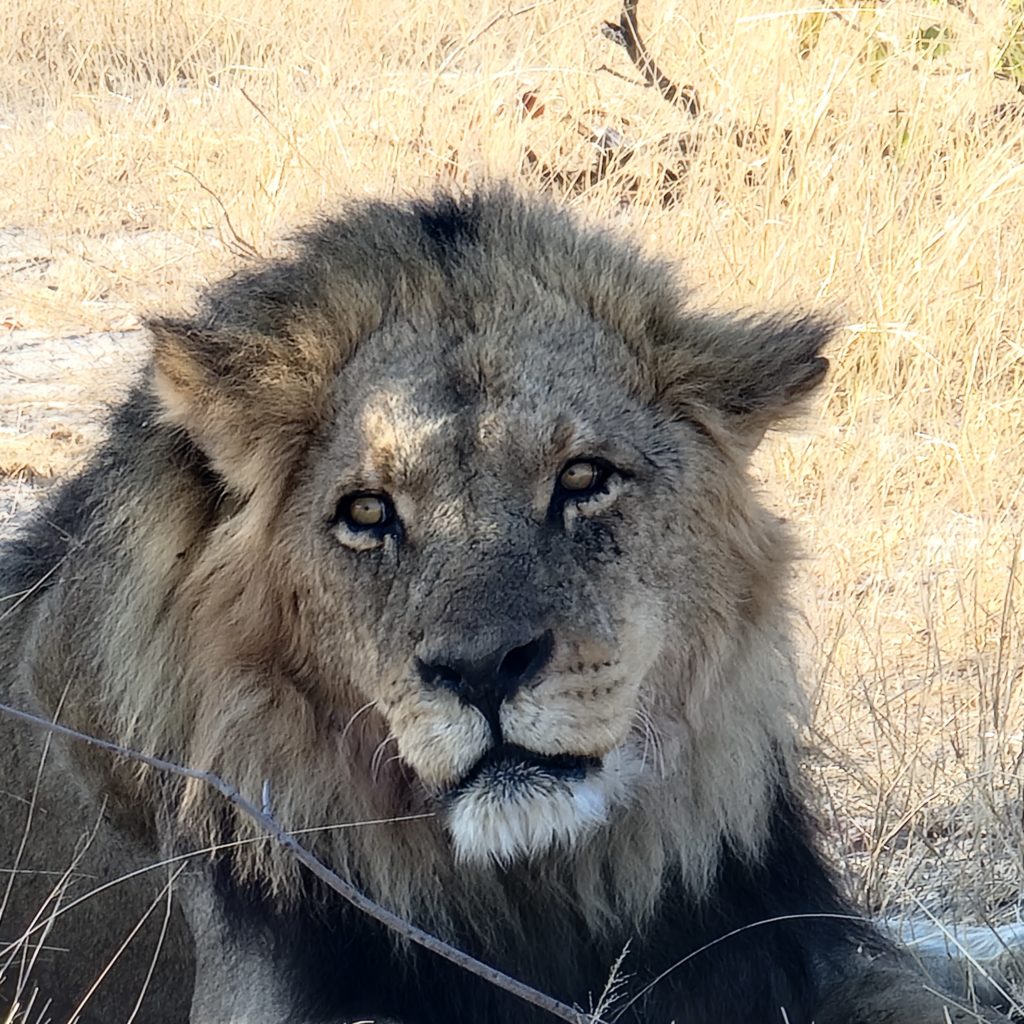
That being said, it’s still quite terrifying to see this up close and not have a little doubt!
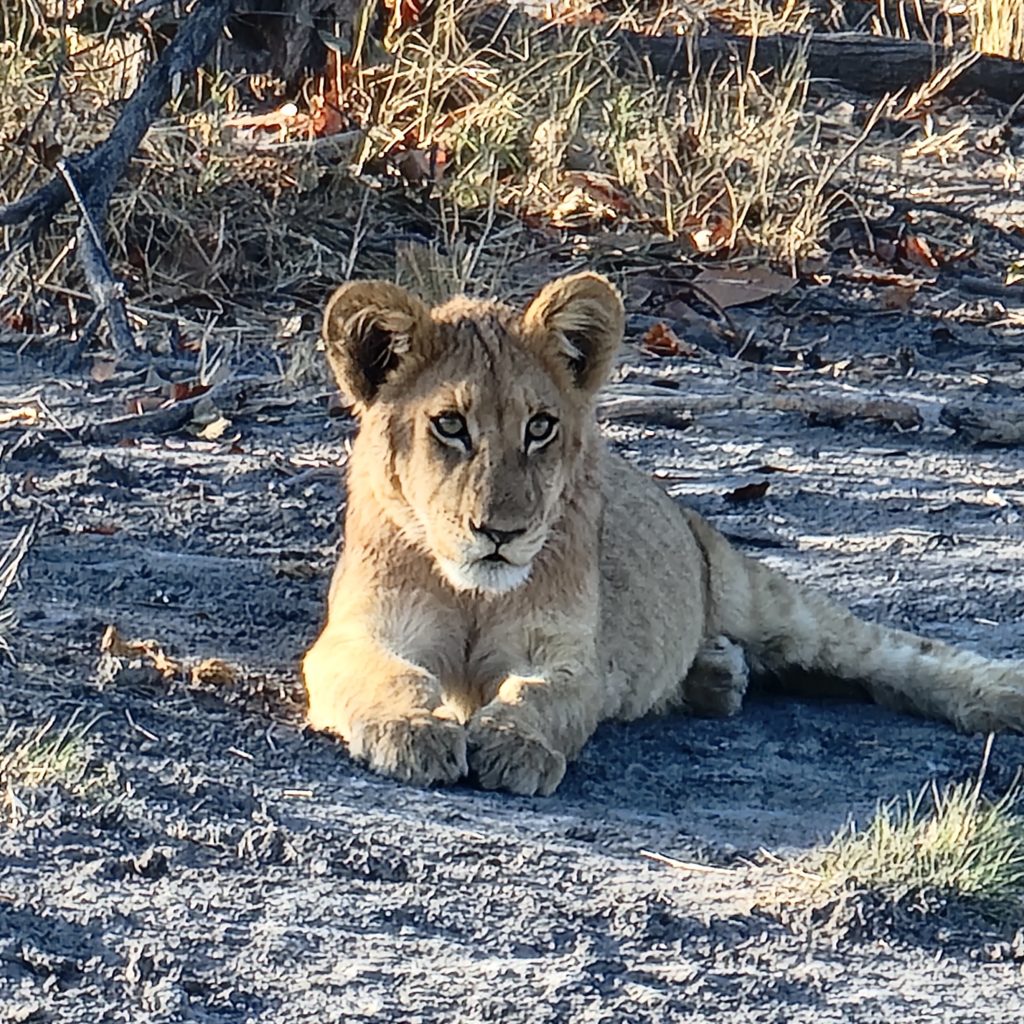
But then you see this and want to just go scratch it behind the ears and hear it purr!
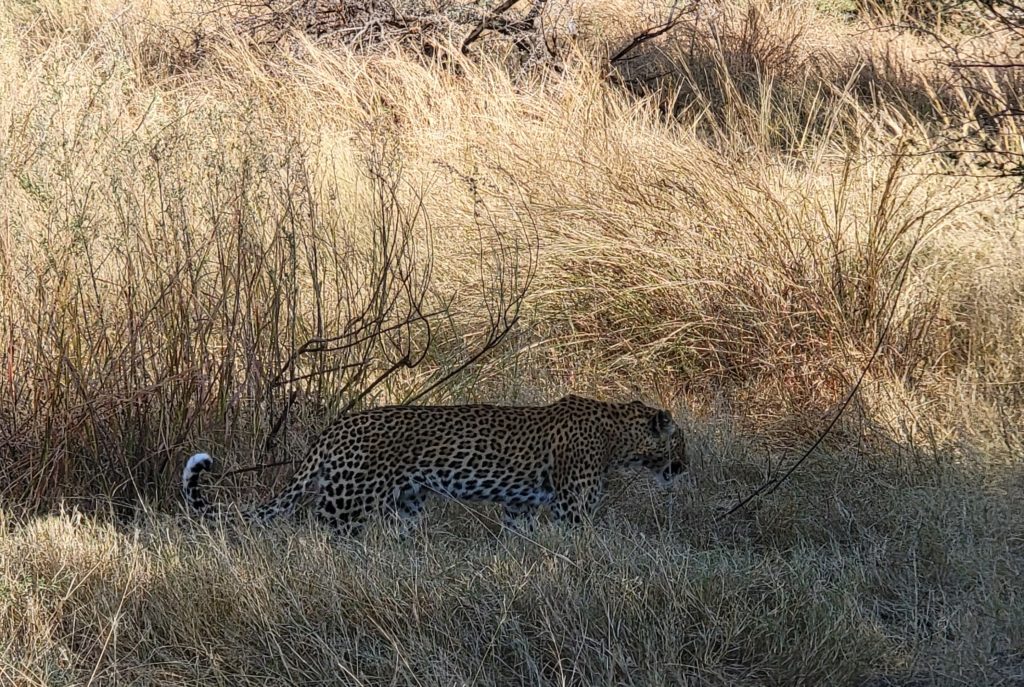
After the pride moved off into the underbrush we decided to head off to the giraffe kill, but then heard on the vhf that a leopard had a fresh impala kill in a tree. So we diverted course one last time and headed that way. The leopard was hiding in the underbrush waiting for all the trucks to move off, so the others left and we just sat silently until he/she came out and we could see it.
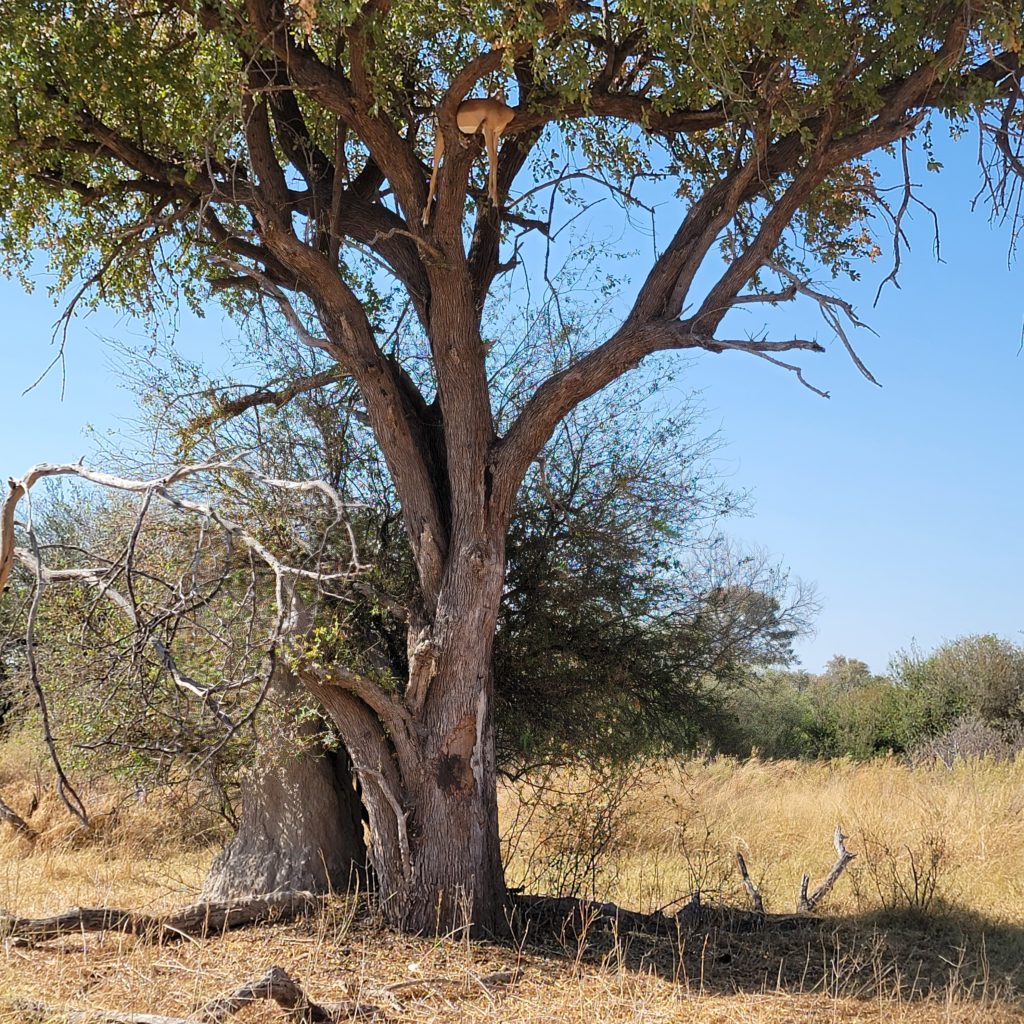
You can see the impala high in this tree. The leopard has left it for now, but Alco says she’ll spend about 3 days eating this meal. Think about the balance it must take to be high up there and still feed on the impala. But the leopard knows with it there in the branches that the vultures can’t get to it from the air, and leopards are one of the few animals that climb (surprisingly, the lions do not). So the only threat to a leopard’s kill is another leopard or baboons. Leopards are solitary hunters, so one will steal from another, but likely it’s easier to find another impala rather than fight for that one (just my opinion). I don’t know about the relationship between leopards and baboons, but will find out in Namibia.
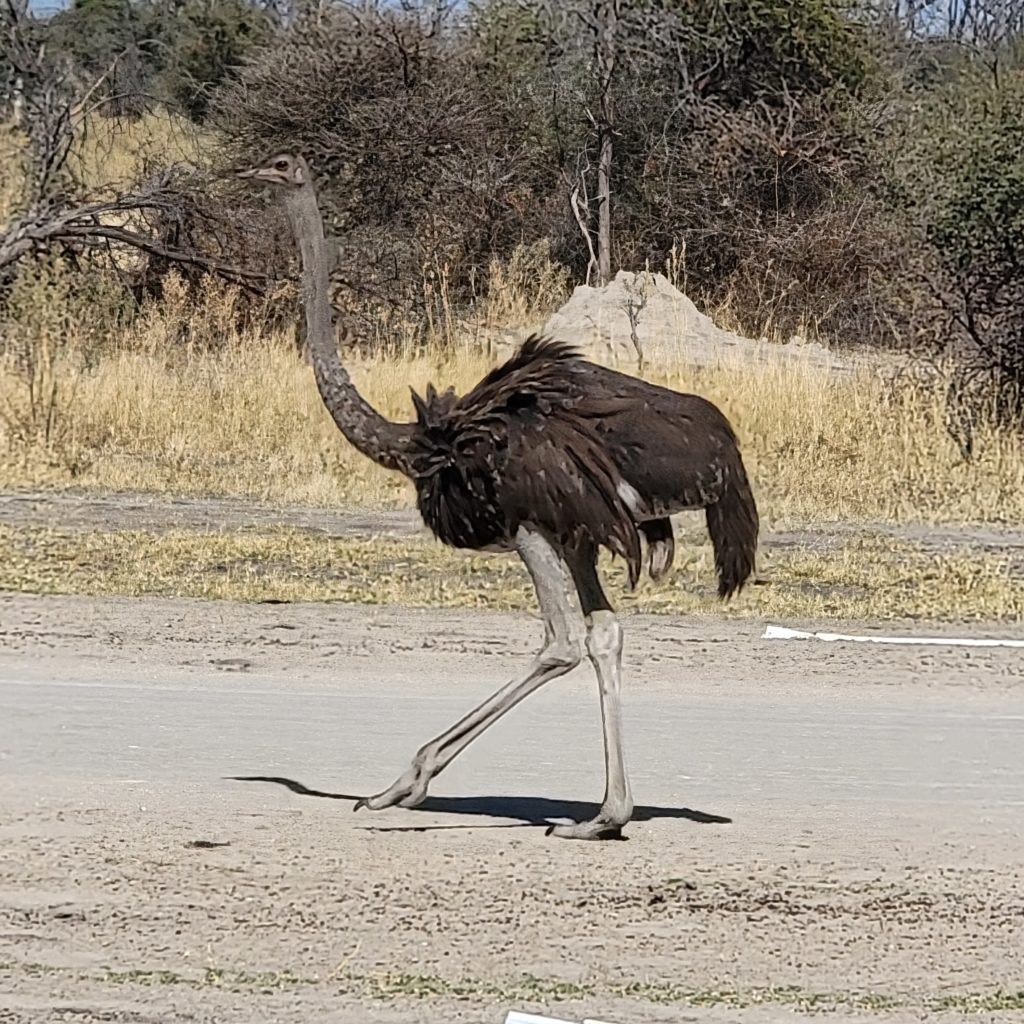
But just so the last picture on my camera reel is not of a dead animal in a tree, here’s a shot of the ostrich we had to convince to get off the runway. Clearing the runway in the African bush so far has been a task to convince elephants, wart hogs and now an ostrich to stay clear for our flights.
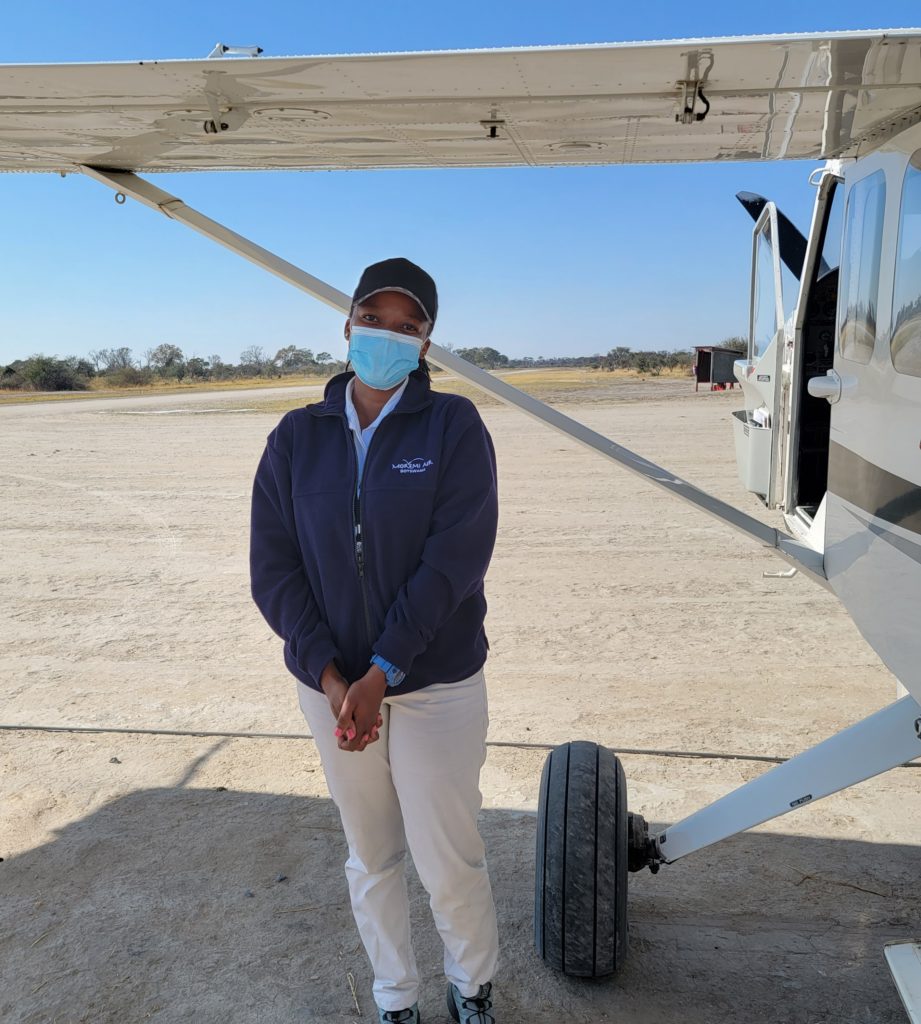
And one last pic from Botswana is our pilot Lilly. She flew us into Rra Dinare and out of there into Maun. She literally is the best bush pilot either of us has ever flow with. It’s very heartening to see young women in Africa in positions like pilot, boat captain and game guide.
More unedited pix from Rra Dinare here: